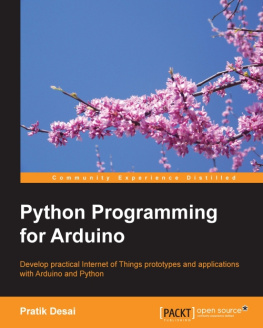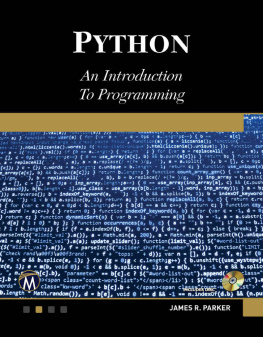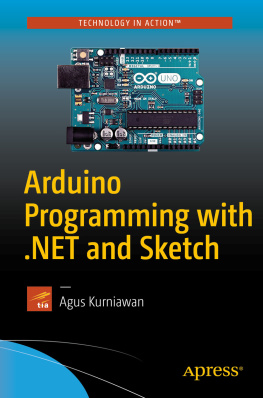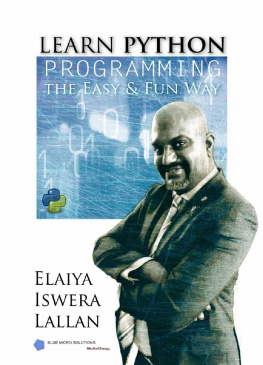COMPUTER PROGRAMMING
By Damon Parker
Copyright 2020 by Damon Parker
All rights reserved
The content of this book may not be reproduce, duplicated or transmitted without direct written permission from the author or the publisher.
Under no circumstances will any blame or legal responsibility be held against the publisher or author, for any damages, reparation or monetary loss due the information contains within this book.
Legal Notice:
This book is copyright protected and is only for personal use. You cannot amend, distribute, sell, use or quote any part of this book without the consent of the author or the publisher.
Disclaimer Notice:
Please note the information contained within this document is for educational purpose only. All effort has been executed to present accurate, up to date and reliable, complete information. No warranties of any kind are declared or implied. Readers acknowledge that the author is not engaging in the rendering of legal, financial, medical or professional advice. The content within this book has been derived from various sources. Please consult a licensed professional before attempting any techniques outlined in this book. By reading this document, the reader agrees that under no circumstances is the author responsible for any losses, direct or which are incurred as a result of the use of information contained within this document, including, but not limited to, errors, omissions or inaccuracies.
Table of Contents
Introduction
Chapter 1: Introduction to Python
Installation Instructions for Python
WINDOWS
MACINTOSH
LINUX
Python Variables
Python Data Types
Python Built-in Functions
Python Built-in String methods
Python Random Numbers
Python Built-in List methods
Python Built-in Set methods
Python Built-in Dictionary methods
Python Built-in File methods
Python Keywords
Chapter 2: Python Coding
Python Numbers
Python Strings
Python Booleans
Python Tuples
Python Sets
Python Dictionary
Python Conditions and If statement
Python While Loop
Python For Loop
Chapter 3: Data Analysis and Machine Learning with Python
The Vs of Big data
History of Big Data
Machine Learning
Basic concepts of machine learning
Machine Learning in Practice
Machine Learning Libraries
NumPy (Base n-dimensional array package)
Matplotlib (Comprehensive 2D/3D plotting)
SciPy (Fundamental library for scientific computing)
IPython (Enhanced interactive console)
SymPy (Symbolic mathematics)
Pandas (Data structures and analysis)
Seaborn (data visualization)
Application of machine learning using Scikit-Learn library
Importing the data set
Data Exploration
Data Visualization
Data Pre-processing
Creating Training and Test subsets
Building the Machine Learning Model
Python Tips and Tricks for Developers
Conclusion
Introduction
Congratulations on purchasing Learn Python: A Crash Course On Python Programming And How To Start Coding With It. Learn The Basics Of Machine Learning And Data Analysis, and thank you for doing so.
The following chapters will discuss the core concepts of Python coding to help you kick start your coding journey. You will also learn the fundamentals of data analysis and machine learning technology. You will start this book with the key features and advantages of learning to code Python as well as the history of how Python programming was created. In the first chapter of this book, you will find instructions on how to install Python on your operating systems (Windows, Mac, and Linux). The concept of Python data types is presented in exquisite detail with various examples of each data type. In Python, variables are at the heart of every syntax. You will learn how to create these variables and assign desired data type to them. This chapter also includes comprehensive lists of a variety of built-in functions and methods supported by Python.
The chapter of this book titled Python Coding will introduce you to the basic concepts of writing efficient and effective Python codes, focusing on various programming elements such as Booleans, Tuples, Sets, Dictionaries and much more. Each concept is explained with standard syntax, relevant examples, and followed by exercises to help you test and verify your understanding of all the concepts. You will also learn how to write if and else statements to retrieve desired information from your data. The concept of for and while loops are explained with explicit details in an easy to understand language.
In chapter titled Data Analysis and Machine Learning with Python, you will learn the basics of big data analysis and the fundamental machine learning algorithms. This chapter also includes brief overview of various renowned machine learning libraries such as Scikit-Learn, NumPy, Matplotlib, SymPy and Pandas among others. A detailed walkthrough with an open-source database using illustrations and actual Python code that you can try hands-on by following the instructions in this book. A number of Python coding tips and tricks have also been provided that will help you sharpen up your Python programming skillset or get familiar with the coding if you are new to Python coding.
There are plenty of books on this subject on the market, thanks again for choosing this one! Every effort was made to ensure it is full of as much useful information as possible; please enjoy!
Chapter 1: Introduction to Python
Python is a high-level programming language, commonly used for general purposes. It was originally developed by Guido van Rossum at the "Center Wiskunde & Informatica (CWI), Netherlands," in the 1980s and introduced by the Python Software Foundation in 1991. It was designed primarily to emphasize readability of programming code, and its syntax enables programmers to convey ideas using fewer lines of code. Python programming language increases the speed of operation while allowing for higher efficiency in creating system integrations. Developers are using Python for web development (server-side), software development, mathematics, system scripting.
With the introduction of various enhancements such as list comprehension and a garbage collection system, which can collect reference cycles, the Python 2.0 was launched in the last quarter of 2000. Subsequently, in 2008, Python 3.0 was released as a major version upgrade with backward compatibility allowing for the Python 2.0 code to be executed on Python 3.0 without requiring any modifications. Python is supported by a community of programmers that continually develop and maintain the CPython, which is an open-source reference implementation. The Python Software Foundation is a not for profit organization that is responsible for managing and directing resources for developing Python programming as well as CPython.
Here are some of the key features of Python that render it as the language of choice for coding beginners as well as advanced software programmers alike:
Python reads a lot like the English language, which contributes to its ease of readability.
Python is a high level programming language and considered easy to learn due to the ability to code using English language like expressions, which implies it is simple to comprehend and thereby learn the language.










